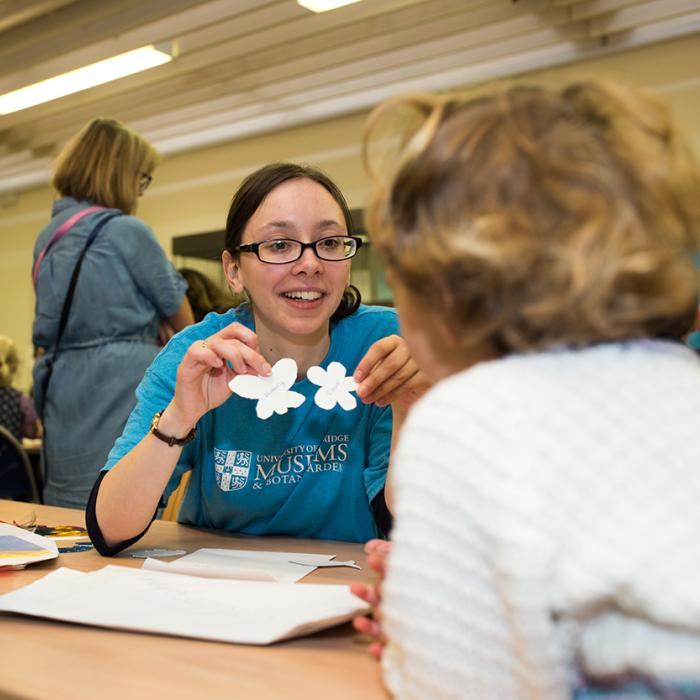We invite families with children who have additional sensory needs to join us for our Studio Sunday Relaxed Session. These quieter art making workshops aim to provide a comfortable creative experience at Kettle’s Yard.
In our Clore Learning Studio, participants can make art inspired by artworks and ideas at Kettle’s Yard, supported by artists and volunteers. No prior art experience is required.
Activities are designed for children ages 3–11 and we encourage parents and carers to create alongside their child.
Inspired by Lubaina Himid’s ‘Flying Carpet’ artwork, we will create our own artwork and develop patterns by things we discover at Kettle’s Yard using collage, paints, pastels and exploring what these materials can become together.
Please visit our website for more information and FAQs.
Inspired by the collaboration of artists Lubaina Himid and Magda Stawarska, artist Hannelore Baxter will introduce you to the exhibition at Kettle’s Yard and work with you to creatively explore the themes and ideas. Together we will use techniques from drawing and collage to gelli-plate printing layered with text and sound to create a new work.
Please bring a packed lunch – lunch is not included.
Please visit our website for more information and FAQs.
We will explore the Kettle’s Yard house where we will look high, low and round corners to find the hidden faces in the collection, including some from our current exhibition Lubaina Humid with Magda Stawarska: Another Chance Encounter.
During the workshop we will play with portraits using traces, mirrors and copies to reimagine the people in the collection and create our own unique artwork and portraits.
Discover how the Kettle’s Yard house has inspired artists Lubaina and Magda and have a go at creating your own giant artwork inspired by what you discover at Kettle’s Yard today.
Please see our website for more information and FAQs.
After exploring the Lubaina Himid with Magda Stawarska: Another Chance Encounter exhibition, we’ll come together in the Clore Learning Studio. Together we will make and paint a life-sized cardboard installation of doorways, conversations and we’ll think about what is visible and what is hidden.
Please bring a packed lunch – lunch is not included.
Please see our website for full FAQs.
Check out the artworks on display, get hands-on in a workshop, spark ideas in a talk, or simply relax to live music with good food and great company.
Drop- in, Free
Everyone is welcome
There’ll be light, drop-in crafting activities throughout the afternoon - no pressure, no experience needed - just a chance to unwind, connect, and get making in a friendly space. Come say hello, hear more about Jimmy’s journey, and take part in some easy, feel-good creativity.
As part of their anniversary celebrations, a member of Jimmy’s will be on hand to share more about the charity’s incredible work. Our creative studio team have been supporting the wellbeing of Jimmy’s residents through regular creative workshops.
Nicholas Romeril is one of the eight artists featured in the Polar Museum's Painting the Poles temporary exhibition.
Nicholas Romeril is one of the eight artists featured in the Polar Museum's Painting the Poles temporary exhibition.

